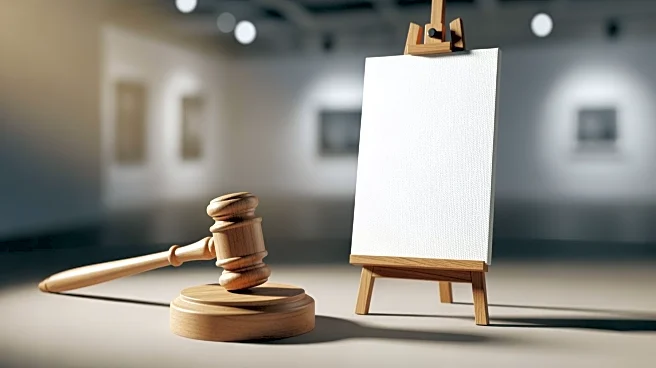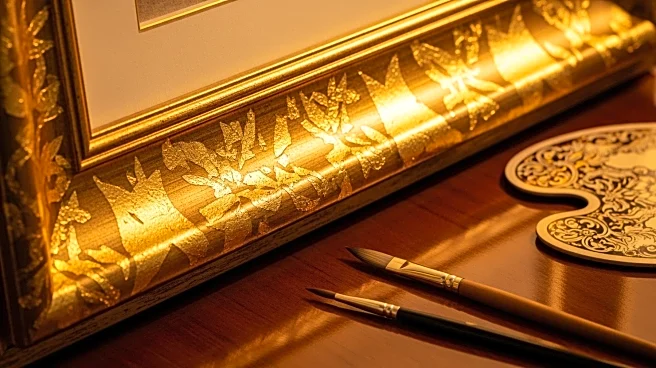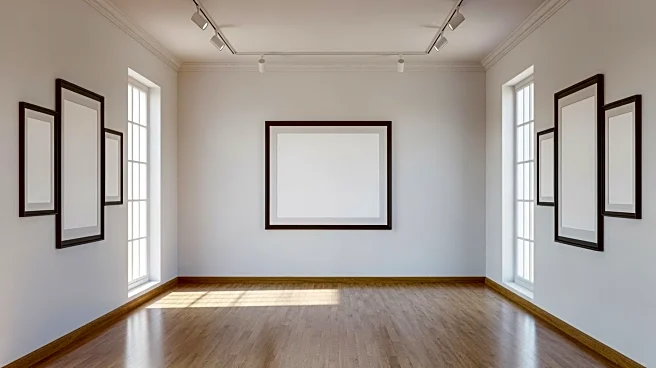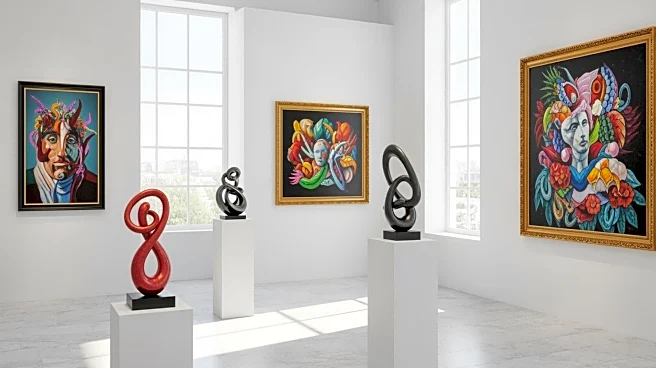What's Happening?
The November marquee sales in New York are set to feature a range of high-value artworks, with Sotheby’s leading the auction season. The sales include notable pieces from renowned artists such as Gustav
Klimt, Frida Kahlo, and Vincent van Gogh. Sotheby’s is showcasing a trio of Klimt paintings from the Lauder Collection, including the prominent 'Bildnis Elisabeth Lederer.' The auction season is marked by a significant increase in estimated values, with over $1.5 billion expected across Sotheby’s, Phillips, and Christie’s. This reflects a selective confidence in the art market, with bidders focusing on blue-chip material from the 19th, 20th, and 21st centuries.
Why It's Important?
The November auctions are a critical indicator of the art market's health and trends, particularly in a period of economic caution. The high estimates and concentration of significant works suggest a growing confidence among collectors and investors in the value of art as an asset. These sales provide insights into the preferences and priorities of the art world, highlighting the enduring appeal of established artists and the potential for new records in auction prices. The success of these auctions could influence future market dynamics, encouraging more investment in art and potentially driving up prices for similar works.
What's Next?
As the auctions commence, the art world will be closely monitoring the outcomes to gauge market sentiment and potential shifts in collector behavior. Successful sales could lead to increased interest in similar artworks and further investment in the art market. Auction houses may continue to focus on securing high-profile pieces to attract bidders and maintain momentum. Additionally, the results could impact the valuation of artworks in private collections and influence future exhibitions and sales strategies.
Beyond the Headlines
The concentration of high-value artworks at these auctions raises questions about accessibility and the role of art as a public versus private asset. As many pieces return to private collections, the opportunity for public engagement with these works diminishes, highlighting the tension between art as a cultural resource and a financial investment. This dynamic underscores the importance of museums and public institutions in preserving and showcasing art for broader audiences, ensuring that cultural heritage remains accessible despite market pressures.











